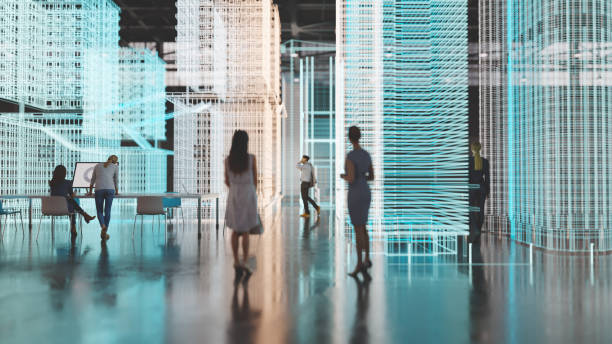Ephemeral Architecture: The Art of Temporary Spaces
In a world obsessed with permanence, a new architectural movement is challenging our perceptions of space and time. Ephemeral architecture, the practice of creating temporary structures designed to exist for a limited period, is revolutionizing the way we interact with our built environment. From pop-up pavilions to transient installations, these fleeting creations are captivating audiences worldwide, blurring the lines between art, architecture, and performance. This article delves into the fascinating realm of ephemeral architecture, exploring its history, current trends, and the profound impact it's having on urban landscapes and cultural experiences.

The Renaissance of Temporary Design
The 1960s and 70s saw a resurgence of interest in temporary structures, driven by avant-garde architects and artists seeking to challenge traditional notions of permanence. Influenced by the countercultural movements of the time, designers began experimenting with inflatable structures, modular systems, and lightweight materials. This period marked a significant shift in architectural thinking, paving the way for the ephemeral creations we see today.
Sustainability and Adaptability
One of the key drivers behind the current popularity of ephemeral architecture is its inherent sustainability. In an era of increasing environmental awareness, temporary structures offer a more eco-friendly alternative to permanent buildings. These designs often utilize recycled or recyclable materials, have a smaller carbon footprint, and can be easily disassembled and repurposed. Moreover, their adaptability makes them ideal for responding to rapidly changing urban needs and societal shifts.
Cultural Catalysts
Ephemeral architecture has become a powerful tool for cultural expression and community engagement. Temporary installations can transform underutilized spaces into vibrant hubs of activity, breathing new life into neglected urban areas. Festivals, biennales, and public art events increasingly feature ephemeral structures as centerpieces, attracting visitors and fostering dialogue about the role of architecture in society. These temporary interventions serve as catalysts for social interaction and urban regeneration.
Technological Innovations
Advancements in digital design and fabrication technologies have greatly expanded the possibilities of ephemeral architecture. 3D printing, parametric design, and advanced materials allow architects to create increasingly complex and ambitious temporary structures. Interactive and responsive designs that adapt to environmental conditions or user input are pushing the boundaries of what’s possible in short-lived architecture. These technological innovations are not only enhancing the visual appeal of ephemeral structures but also improving their functionality and sustainability.
Challenges and Criticisms
Despite its growing popularity, ephemeral architecture faces several challenges and criticisms. Some argue that the temporary nature of these structures can lead to a lack of durability and quality. Others question the environmental impact of repeatedly constructing and dismantling buildings. There are also concerns about the potential for ephemeral architecture to contribute to gentrification or serve as a distraction from more pressing urban issues. Balancing these concerns with the benefits of temporary design remains an ongoing challenge for practitioners in the field.
The Future of Fleeting Forms
As we look to the future, ephemeral architecture is poised to play an increasingly important role in shaping our built environment. The flexibility and adaptability of temporary structures make them well-suited to address urgent global challenges, from disaster relief housing to pandemic response facilities. Moreover, as cities grapple with issues of density, affordability, and sustainability, ephemeral architecture offers innovative solutions for creating dynamic, responsive urban spaces.
Conclusion
Ephemeral architecture represents a paradigm shift in how we conceive of and interact with the built environment. By embracing impermanence, designers are creating spaces that are more sustainable, adaptable, and culturally relevant. As this movement continues to evolve, it challenges us to reconsider our relationship with the spaces we inhabit and the lasting impact of temporary interventions. In a world of constant change, ephemeral architecture stands as a testament to the power of transient beauty and the enduring influence of fleeting forms.





